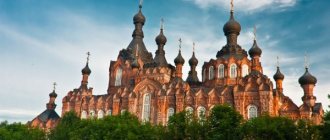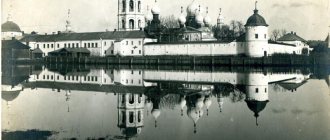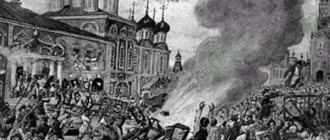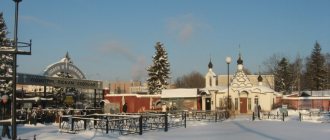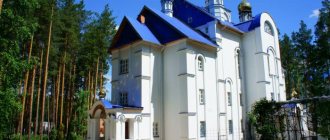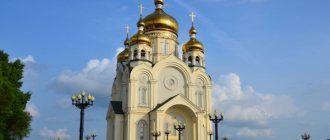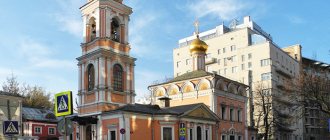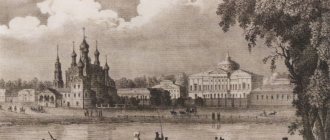Mir
Russia Moscow region Avdotino village Nikolo-Berlyukovskaya desert Map loading in progress...
{"format":"leaflet","minzoom":false,"maxzoom":false,"limit":50,"offset":0,"link":"all","sort":[""], "order":[],"headers":"show","mainlabel":"","intro":"","outro":"","searchlabel":"\u2026 \u0441\u043b\u0435\ u0434\u0443\u044e\u0449\u0438\u0435 \u0440\u0435\u0437\u0443\u043b\u044c\u0442\u0430\u0442\u044b","default":"","import-annotation":false,"width ":"auto","height":"350px","centre":{"text":"","title":"""link":"""lat":55.92906500000000136196831590496003627777099609375,"lon": 38.2334340000000025838744477368891239166259765625,"icon":""},"title":"","label":"","icon":"","lines":[],"polygons":[],"circles":[ ],"rectangles":[],"copycoords":false,"static":false,"zoom":8,"defzoom":14,"layers":["OpenStreetMap"],"image layers":[] ,"overlays":[],"resizable":false,"fullscreen":true,"scrollwheelzoom":true,"cluster":false,"clustermaxzoom":9,"clusterzoomonclick":true,"clustermaxradius":80, "clusterspiderfy":true,"geojson":"","clicktarget":"","showtitle":true,"hidenamespace":false,"template":"","userparam":"","activeicon": "","pagelabel":false,"ajaxcoordproperty":"","ajaxquery":"","locations":[{"text":"\u003Cb\u003E\u003Ca href=\"/palomnik/%D0% 9D%D0%B8%D0%BA%D0%BE%D0%BB%D0%BE-%D0%91%D0%B5%D1%80%D0%BB%D1%8E%D0%BA%D0%BE %D0%B2%D1%81%D0%BA%D0%B0%D1%8F_%D0%BF%D1%83%D1%81%D1%82%D1%8B%D0%BD%D1%8C\" title=\»\u041d\u0438\u043a\u043e\u043b\u043e-\u0411\u0435\u0440\u043b\u044e\u043a\u043e\u0432\u0441\u043a\u0430\u044f\u043f\u04 43\u0441\u0442\ u044b\u043d\u044c\»\u003E\u041d\u0438\u043a\u043e\u043b\u043e-\u0411\u0435\u0440\u043b\u044e\u043a\u043e\u0432\u0441\u043a\u 0430\u044f\u043f\u0443 \u0441\u0442\u044b\u043d\u044c\u003C/a\u003E\u003C/b\u003E\u003Chr /\u003E\u003Ca href=\"/palomnik/%D0%A1%D0%B2%D0%BE%D0 %B9%D1%81%D1%82%D0%B2%D0%BE:%D0%90%D0%BD%D0%BD%D0%BE%D1%82%D0%B0%D1%86%D0% B8%D1%8F\" title=\"\u0421\u0432\u043e\u0439\u0441\u0442\u0432\u043e:\u0410\u043d\u043d\u043e\u0442\u0430\u0446\u0438\u044f\"\u003 E > 2\u043d\u044b\u0439\ u043c\u043e\u043d\u0430\u0441\u0442\u044b\u0440\u044c \u0432 \u041c\u043e\u0441\u043a\u043e\u0432\u0441\u043a\u043e\u0439 \u 043e\u0431\u043b\u0430\u0441\ u0442\u0438. XVII \u0432\u0435\u043a\u0430, \u0437\u 0430\u043a\u0440\u044b\u0442 1919. 1919. 1919 \u043a\u043e\u043d\u0447\u0430 \u0442\u0435\u043b\u044c\u043d\u043e \u043f\u0435\u0440\u0435\u0434\u0430\u043d \u0426\u0435\u0440\u043a\u0432\u0438 \u0442 \u043e\u043b\u044c\u043a\u043e \u0432 2015 \u0433\u043e\u0434\u0443.","title":"\u041d\u0438\u043a\u043e\u043b\u043e-\u0411\u0435\u0440\u043b\u044e\u043a\u043e\ u0432\u0441 "link":""lat":55.92906500000000136196831590496003627777099609375, "lon":38.2334340000000025838744477368891239166259765625,"icon":""}], "imageLayers":[]}
55.925294; 38.236557
Russia, Moscow region, Bogorodsky urban district, Avdotino village, Central street
Avdotino village, Moscow region
Russia
Telephone:
8 (968) 374-11-07
Email:
Nikolo-Berlyukovskaya hermitage
- Orthodox monastery in the Moscow region. Founded at the beginning of the 17th century, closed in 1919. The monastery ensemble was finally transferred to the Church only in 2015.
Historical events
The Nikolo-Berlyukovsky Monastery was first mentioned at the beginning of the 17th century, when the monk Varlaam came to the banks of the Vari with the icon of St. Nicholas the Wonderworker from the Trinity Monastery devastated by the Polish invasion.
But by that time, the monks had already inhabited the local caves for a long time and even built 2 temples on the site of former pagan temples, which also suffered from the invasion of foreigners.
In 1613, with the construction of a new stone St. Nicholas Church at the local cemetery, the revival of the monastery began by Hieroschemamonk Varlaam, who was joined by the nuns of the old woman of the ruined convent, whose names have survived to this day in the names of the nearest settlements: the village of Avdotino and Ulyanina Mountain.
Local residents associate the name of the desert with the nickname of the vagabond robber Birlyuk, which means wolf, famous for his cruel, inhumane disposition.
At the beginning of the 18th century, all church lands around the St. Nicholas Church were transferred to the Moscow Miracle Monastery, from where several monks were sent to the monastery with abbot Pachomius.
The God-loving merchant Vikul Martynov made a generous donation for the new stone St. Nicholas Church, which since 1719 has become the main temple of the Birlyukov Hermitage. A little later, the monastery was transferred to the Stromyn Dormition Monastery, and Hieromonk Diodorus was appointed rector. From those times there is an ancient Diodorovsky bell.
A few years later, the strict ascetic and irreconcilable defender of Orthodoxy, Hieromonk Josiah Samghin, became the abbot and confessor of the monastery for a short time, followed by part of the brethren from the Sarov Hermitage.
But the champion of the true faith soon had to suffer for the truth and denunciation of state power. He was defrocked and exiled with some of his brethren to an eternal settlement in Kamchatka, the rest of the monks were resettled in various monasteries, and the Birlyukov Hermitage was closed.
St. Nicholas Church became a parish church, but not for long. At the end of the century, at the behest of His Eminence Bishop Plato, a new revival of the provincial monastery began, where the strict ascetic Hieromonk Joasaph was appointed, who managed to attract rich investors and donors to his side for the construction of stone buildings and the monastery cathedral.
In the 19th century, spiritual flourishing and stone construction of the monastery's fraternal buildings and cathedrals began, which was accompanied by a period of active cave digging, where hermits and prayer workers of the Russian land labored in the silence and solitude of the dungeon.
The monastery is thriving and attracts numerous pilgrims who make rich contributions to the construction of stone buildings and the beautification of the growing monastery.
At the same time, a traditional religious procession was born in local district churches with the image of the Savior, which also collected generous donations from local prayer books. The monastery is rapidly growing rich and developing, gaining more and more fame in the area.
A bookbinding and icon-painting workshop, a rich library, a school for teaching the ancient Slavic and Greek languages, as well as the art of bell ringing appeared at the monastery.
By the beginning of the last century, 5 stone temples with an extensive cave hermitage with numerous administrative and residential buildings were built on a large landscaped area, a water supply system was laid, and a rich economy existed. The monastery was in charge of parish schools, a temperance society, charitable organizations and a hospital.
But in the year 20, all buildings and structures, except for the All Saints Cathedral with cells, were transferred to the jurisdiction of the Home for the Invalids, the Spassky Cathedral became a parish church, processions with the miraculous image were prohibited.
And after another 2 years, the city commission began expropriating church valuables: altar crosses and rich utensils, removing all silver frames from icons and liturgical books worth more than 9 pounds with diamond stones, chrysolite and pearls.
At the beginning of 1930, the Birlyukov monastery was closed, and its last abbot, Xenophon, with Hieromonk Gorgoniy and novice Grigory Averyanov, was arrested and sent to prison in Butyrki.
The monastery cemetery was completely destroyed, the monastery with caves was lost, the galleries and underground temple were littered with garbage. The nursing home located on the territory of the monastery was replaced by a tuberculosis sanatorium, and during the Great Patriotic War a military hospital was located here, then a city hospital for tuberculosis patients and a psychiatric clinic.
In the fall of 1992, the life of the community at the Spassky Church began to revive, but only in December 2004 the first liturgy was served, and 2 years later the revival of the monastery began.
Hieromonk-fire victim
The place chosen by the first settlers was not far from the village of Berlino (in subsequent years Avdotino), so the monastery they founded was initially called the St. Nicholas Berlin Hermitage. Its history began to actively develop after the appearance of Hieromonk Varlaam in these parts, who came here at the beginning of the 17th century, when the Russian land was engulfed in the fire of the Time of Troubles. Previously, he was a resident of the Stromynsky Assumption Monastery, located near the village of Fryanovo, but devastated by the Poles and burned by them in 1603.
It is interesting to note that it was after its appearance in historical documents of that era that the monastery began to be called the Nikolo-Berlyukovsky Monastery. Researchers have no definite opinion about the origin of this name. Popular rumor connects it with the name of a certain robber named Berliuk, who hunted in these parts and then repented, which means “wolf”, or simply “beast”.
Whether this legend has any real basis is unknown, especially since attributing the founding of monasteries to former repentant villains has become part of the folk tradition. An example of this is the famous Optina Pustyn, also allegedly founded by the robber Opta.
Architecture, appearance
The main highlight of the monastery is its unique cave complex of the monastery, which appeared on the basis of natural miraculous karst depressions in limestone, on the site of ancient pagan temples. Then the underground territory was expanded by the monks; this process was especially active in the 19th century.
New premises, cells, passages and a cave temple appeared here, consecrated in the name of the Forerunner in the second half of the 19th century. The main entrance of the temple faces the Varya River, the altar part is located completely underground.
Internal underground passages connected the premises with the Kazan Church and the residential caves of the skete brethren. The main spacious summer church of the monastery was consecrated by Metropolitan Philaret in the name of the Savior in the middle of the 19th century, and has survived to this day.
It was built entirely from public donations; the most famous donors included the following names:
- Shchekin merchants;
- Princess Varvara Naryshkina;
- Countess Anna Sheremetyeva;
- Princess Olga Mosalskaya;
- Countess Kaverina and many others.
The temple is a 5-domed white stone building in the late classical style, 36 meters high, erected by the Moscow architect Fyodor Shestakov on a high basement. The cubic structure has no apses, is oriented equally to all cardinal directions, and has adjacent flat vestibules decorated with pilasters.
The pediment of the building is decorated with a picturesque image. Later the walls were plastered and painted light blue. The windows of the lower tier are strictly decorated with keel-shaped rods and semicircular endings, the upper openings are round in shape. The central light drum is crowned with a dome with a cross, the other domes have a two-tier octagonal base.
The unique cruciform basement was built according to the design of the architect N. Kozlovsky. The gateway single-domed stone church was consecrated in honor of Basil the Great in 1840. The entrance porch with a portico, cast-iron steps and a cast platform is strictly decorated with white stone columns.
The building has many large windows arranged in tiers. The entire design is distinguished by the rigor of the classical style. In addition, in the abbot's building there is the Church of All Saints, founded on the site of the discovery of the miraculous icon in the western part of the monastery.
The building in the form of a pillarless quadrangle ends with semicircular zakomaras, the 4-slope roof is topped with an onion on a multifaceted light drum decorated with kokoshniks.
The façade of the building is lined with rusticated blades and austere windows with classic platbands and figured frames. The stone buildings adjacent on both sides were reserved for the abbot's chambers, fraternal cells, a pharmacy and a monastery hospital.
The bell tower in the eclectic style began to be built at the end of the same century according to the design of Alexander Kaminsky, who did not have time to complete the construction. This work had to be continued and completed by his student, the young architect Vasily Borin. Money for the construction of the tallest belfry in the district was allocated according to the will of the merchant Fyodor Samoilov.
The structure consists of 4 tiers:
- The main entrance gate is located below.
- The next tier was dedicated to the Great 16-ton festive bell.
- The entire set of 15 bells fit on the third floor.
- The upper tier consisted of a clock ringing of 6 objects.
Also on the territory of the monastery there is a stone 3-altar warm church of the Life-Giving Trinity, built on the site of an old dilapidated one in 1878 by the architect Nikitin.
The chapels are also consecrated here:
- in honor of St. Nicholas the Wonderworker;
- in the name of the Great Martyr Mina.
This single-domed building with a refectory was built in an eclectic style, with features of late Byzantine and Old Russian influence in the design of the facades. The drum is topped with a high large dome and mounted on a squat quadrangle. The roof of the building is decorated with kokoshniks.
The Nikolo-Berlyukovsky Monastery is open to visitors every day of the week from 5:30 to 20:00.
Other decorations include pointed arches, portals, figured columns, and arcature belts. The monastery complex is surrounded by the abbot's garden, where new fruit trees and berry bushes have been planted, and beautiful flower beds have been laid out.
The first stone building of the monastery
As the number of pilgrims who wanted to venerate the miraculous icon and heed the instructions of Elder Varlaam increased, the monastery’s hitherto meager treasury was replenished. Several years passed, and with donations from pilgrims and contributions from the boyars who visited the monastery, a stone church was erected on the site of the former chapel, consecrated in the name of St. Nicholas the Wonderworker.
In 1710, since the monastery (Nikolo-Berlyukovsky) did not yet have official status by decision of the diocesan leadership, the temple received the status of a metochion of the Moscow Chudov Monastery, and several monks, led by abbot Pohomius, arrived from the capital to serve in it, as well as for the general arrangement. This was a significant step towards recognition of the monastery by the Moscow Patriarchate.
The patriarchal order to establish a new monastery came seven years later, and, having received official status, the hermitage was removed from the jurisdiction of the Chudov Monastery. History has preserved the name of the first abbot of the monastery, he was Hieromonk Diodorus, who devoted twenty years to serving God within the walls of the monastery entrusted to him.
Interior decoration
In the second half of the 19th century, a 3-ton cast iron iconostasis of Kasli casting with gilded coating was installed in the cave monastery church. It covered the altar part, located in the cave cell of the hieromonk schema-monk Macarius. The icons placed in the partition are made on copper sheets.
The monks lined the walls and floor of the underground rooms with bricks; the top of the temple remained untouched, made of karst limestone. The vaults of the rooms are very low; in many passages it is impossible to stand up to your full height.
The upper church of the Spassky Cathedral has a light and spacious interior; in the basement the vaults are much lower. The floors are lined with patterned tiles, the steps are lined with white stone. The vaulted walls of the room were decorated with paintings of biblical scenes and Arabesques right up to the cornice; a carved 2-tier iconostasis, made in the Rococo style with gilding, separated the altar part of the room.
The interior of the warm Trinity Cathedral was completely painted with frescoes. The luxurious 3-tier gilded iconostasis is decorated with precious rosewood and carved walnut columns.
Interesting facts and legends
On May 24, 1829, a significant miraculous event occurred: a blind woman, Tatyana Ivanovna Kuznetsova, was granted complete healing from the acquired image of “The Kiss of Jesus Christ by Judas.”
After this, the miraculous icon was solemnly transferred to the Trinity Cathedral in a procession of the cross in front of a huge crowd of people. He stayed in the monastery until the beginning of the last century, attracting a huge number of pilgrims.
Traces of the miraculous icon are currently lost. The main shrine of the newly opened monastery was another ancient image of the same name, which was presented to the future monk Evmeniy by an elderly parishioner of the temple in Mytishchi.
And only 7 years after this significant event, Hieromonk Evmeniy was appointed rector to restore the Berlyukov Hermitage. Thousands of believers still pray before her for healing from eye diseases and other ailments. The monastery's Spassky Cathedral appeared earlier than the similar well-known Moscow church; it was built in honor of the 25th anniversary of the victory over Napoleon.
The 91-meter stone bell tower became the tallest in the Moscow region and entered the top five tallest monastery belfries in Russia. Its dome is topped with a 622-kilogram copper cross. The monastery has its own Alley of Romanov Glory with memorial busts of Russian emperors.
First abolition of the monastery
The position of the monastery did not change for the better in subsequent reigns. Moreover, in 1770, under Catherine II, who, as is known, pursued a policy of secularization, that is, taking away church lands, the Nikolo-Berlyukovsky monastery was completely abolished, and the Nikolsky Church located on its territory received the status of a parish church.
Only after nine years, thanks to numerous appeals from local residents and representatives of the clergy, by decree of the Moscow Spiritual Consistory, the monastery (Nikolo-Berlyukovsky) regained its rights. However, the former free-thinking of his brethren was not in vain - the monastery received the status of a provincial desert, that is, it was deprived of any material support from the church authorities and had to exist exclusively at the expense of its own resources. At that year, there were eight such superfluous monasteries in the Moscow diocese.
Opening hours and schedule of services
Interesting excursions are organized for Orthodox pilgrims and guests of the monastery, telling about the history of the monastery. The duration of the program is about 1 hour. The estimated cost for a group of up to 10 people is 1 thousand rubles. In addition, daily services are held in the monastery churches according to the following schedule:
| During weekdays | Midnight Office and Matins | from 6 o'clock |
| Watch. Liturgy | 8 hours | |
| Evening service | from 17-30 hours | |
| On Saturdays | All-night vigil | 16 hours |
| On holidays and Sundays | Divine Liturgy | from 8-40 o'clock |
Also, every Thursday there is a prayer service with the reading of the Akathist to the Holy Saint Nicholas. On Fridays, general prayers are held in front of the “Inexhaustible Chalice” image of the Mother of God. Every Saturday you can pray together before the miraculous icon of “The Kiss of Christ by the Traitor Judas.”
On Sundays after the Liturgy, the brethren pray for the departed, and once at the beginning of the month a prayer service is served in the lower Church of St. Michael the Archangel in front of the image of the Mother of God “All-Tsarina”.
Under the patronage of Metropolitan Platon
Hieromonk Joasaph, a man not only deeply religious, but also possessed of extraordinary economic and business acumen, was appointed rector of the revived monastery. He managed to earn the trust of the outstanding church figure of that time, Metropolitan Platon (Levshin), who enjoyed great influence at court, and, thanks to his support, received a blessing and, importantly, funds for the construction of a new church in honor of the Holy Trinity. When the construction was completed, Metropolitan Platon personally consecrated it, and made a significant contribution of liturgical books and various utensils.
Contacts
The Nikolo-Berlyukovsky Monastery is located in the Noginsk district of the Moscow region in the village of Avdotino 12. The monastery maintains its own website, which can be found at: berluki.
There is also an Instagram account: monberluki, where information is updated regularly. The monastery staff shoots and posts videos to support the monastery’s own YouTube channel: user/monberluki.
Seditious Monastery
Many monks also fell into disgrace, according to denunciations received by the Secret Chancellery, who “favourably listened” to their abbot. True, the sentence against the brethren was not so severe, and the authorities limited themselves to deporting them to other monasteries. However, since then the monastery itself (Nikolo-Berlyukovsky) began to gradually decline. In Russia, secular power has always had priority over ecclesiastical power; it is natural that a monastery, tainted by political sedition, could not count on the support of the Holy Synod.
How to get there by car, public transport
The Nikolo-Berlyukovsky Monastery is located very close to the capital, 42 km northeast of Moscow.
- You can get there by car through the Shchitnikovo exit along the Shchelkovskoe highway through the city of Chkalovsky, the village of Aniskino and the villages of Yunost and Raiki, passing the bridge over the Vorya River, after 200 m make a right turn following the sign, go straight to the village of Avdotyno. You can enter the coordinates for your car navigator: 55.929355, 38.230985.
- It is also easy to get from Moscow by direct bus No. 321 from the Shchelkovskaya metro station.
- The electric train to Chkalovskaya station departs from Yaroslavsky station, after which you will need to transfer to bus 321 and go to your destination.
Unique monastery bell tower
The end of the 19th century was marked by the construction of the most grandiose structure for which the Nikolo-Berlyukovskaya hermitage became famous throughout Russia. The monastery managed to find funds and opportunities to erect one of the tallest bell towers in Russia. This building, built according to the design of the Moscow architect Alexander Stepanovich Kaminsky, is unique both as an architectural monument and as a bold engineering project.
Its height is eighty-eight meters, and on top it was crowned with a cross, cast by master Shuvalov from red copper and weighing more than six hundred kilograms. All construction was carried out with voluntary donations from the capital's merchants Samoilov and the Lyapin brothers.
Where to stay
Tourists can explore all the sights of the monastery in one day. The monastery provides free housing for visiting workers. Other guests and pilgrims can stay at the nearest hotel or private sector.
The holiday complex in the nearby village of Voskresenskoye is called the Emerald City, located on the street of the same name, building 1. The restaurant serves a hearty continental breakfast in the morning, and at other times you can order dishes from the menu.
The health complex has free secure parking, an indoor swimming pool and a seasonal summer pool with a spacious outdoor sunbathing terrace. There is also a common lounge area and equipped barbecue facilities.
Guests are offered relaxation in a hammam or sauna, massage, swimming in a lake or a cold pool, walks through ecologically clean forests and fields, and their own farm with a mini zoo and delicious products. Children will also enjoy the mini pool, outdoor playground and indoor board games room, and there are children's TV channels.
For young people, there are night discos with a DJ, a bar with soft drinks, karaoke and billiards. Guests are offered a budget double room with a double bed and all amenities for 2 thousand rubles. The room has a modern TV, wireless Internet connection, and all the necessary amenities for a comfortable stay.
You can stay in the village of Dyadkino, where they offer a room in a guest house on Sosnovaya Street 5, with a magnificent garden and views of the beach. The hotel complex has a fitness room, karaoke, and a children's play club.
Guests can relax in a spacious common lounge area, sunbathing terraces, a tennis table or a game of billiards. The room has all the amenities and includes a kitchenette with a refrigerator, electric kettle and microwave.
All rooms have modern cable TVs and the bathrooms include a hairdryer and free toiletries. In the mornings, residents of the complex are offered a buffet breakfast. The cost of double accommodation can be selected from 2.3 thousand rubles.
The doors of the Ulitkino holiday resort complex in the village of Raiki on Tsentralnaya Street 32B are also open. The hotel in a picturesque pine forest on the river bank offers relaxation in a Russian bathhouse with an indoor swimming pool. Guests can play ping-pong, tennis or football on the outdoor sports grounds; there is a rental of boats, sleds and skis, and a small zoo for children.
Free secure parking is provided for car owners, but guests can be transported by private bus from the metro station. Here you can stay in a room or rent a separate Russian-style wooden cottage for the weekend.
All rooms are equipped with all necessary amenities. There is a TV with cable channels, a refrigerator, an electric kettle, and heating. Prices for double accommodation start from 3 thousand rubles.
The Nikolo-Berlyukovsky active monastery in the near Moscow region with great joy welcomes guests, tourists, Orthodox pilgrims and workers who flock to these sacred and incredibly picturesque places from all corners of the vast country.
